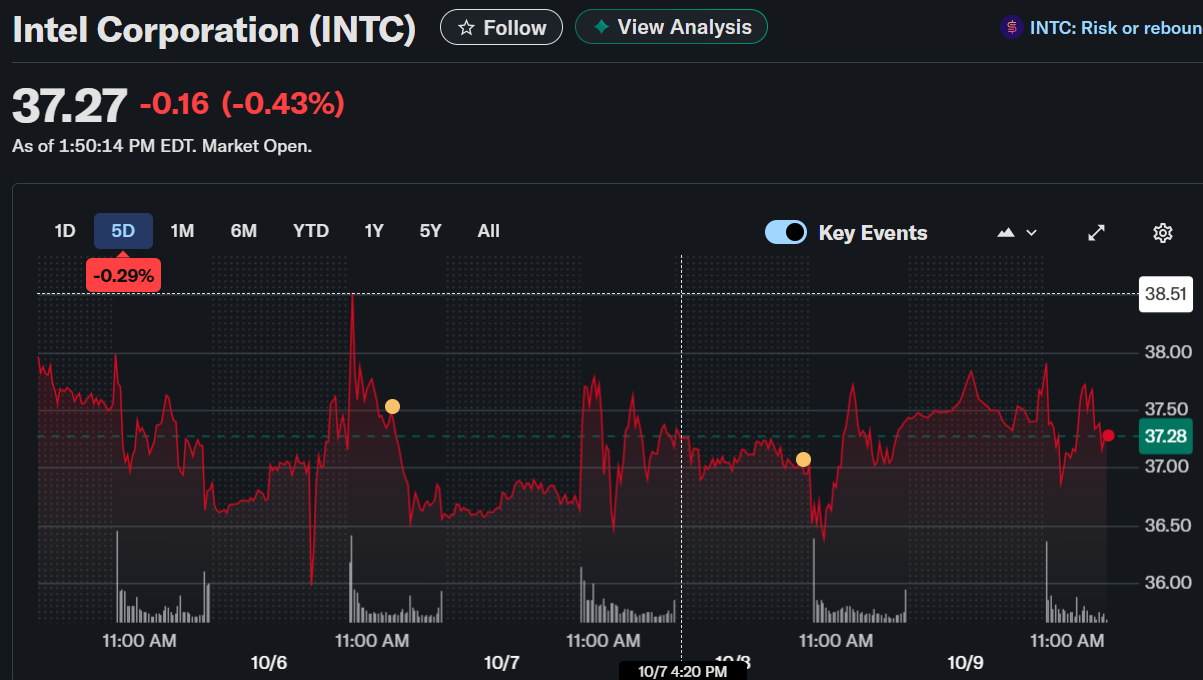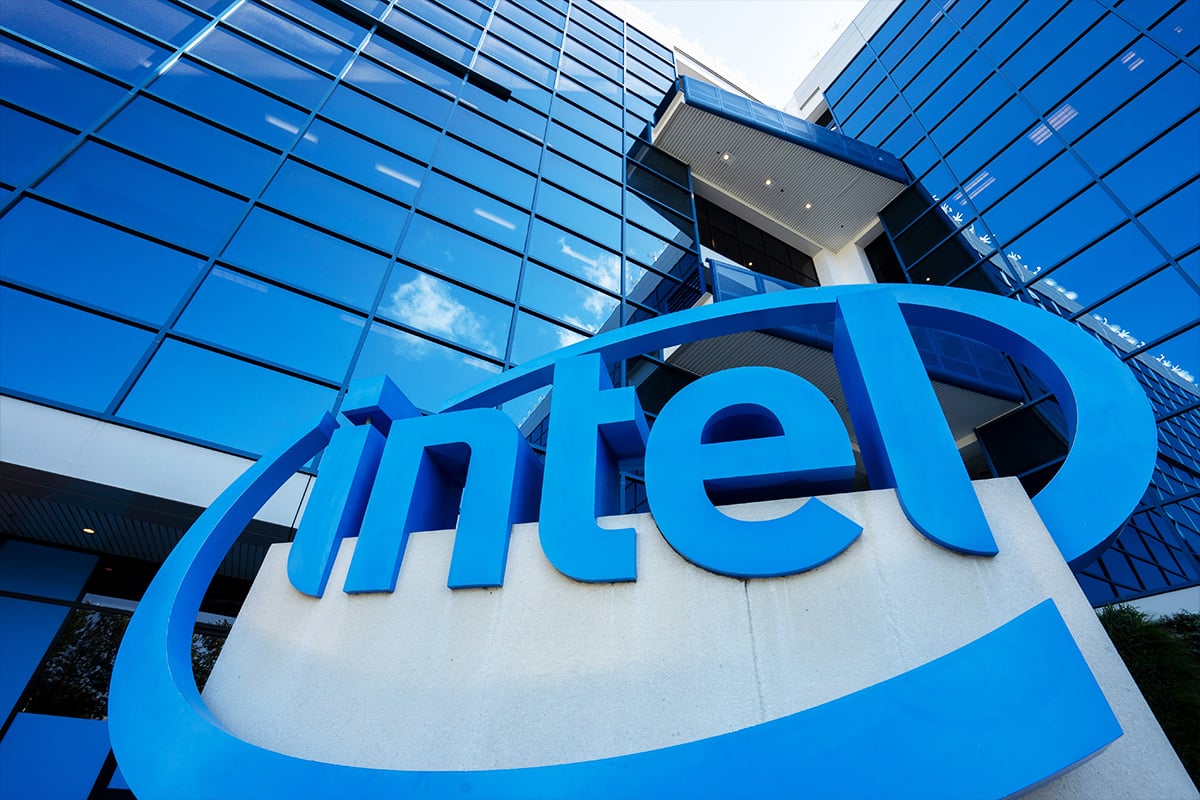TLDR
- Intel debuts Panther Lake, powering AI PCs with 50% faster performance.
- Panther Lake and Clearwater Forest define Intel’s U.S. chip future.
- Intel’s 18A process boosts AI, robotics, and server chip performance.
- Intel’s U.S. fabs lead next-gen AI chips with Panther Lake and Xeon 6+.
- Panther Lake drives Intel’s AI and robotics vision on 18A U.S. silicon.
Intel shares dropped to $37.21, down 0.59%, following the unveiling of its next-gen Panther Lake processors.

Despite brief midday spikes, the stock showed a downward trend throughout the session. The announcement centered around developments in Intel’s U.S.-based chip manufacturing strategy.
Panther Lake Marks a Shift in Client SoC Performance
Intel has officially introduced its Core Ultra series 3 chips, code-named Panther Lake, which are designed using the advanced Intel 18A process. These new processors aim to power AI PCs, edge devices, and robotics platforms with scalable, energy-efficient chiplet architecture. The product is expected to enter volume production this year and reach broader markets by January 2026.
Panther Lake integrates up to 16 high-performance and efficient cores, offering more than 50% performance gain over previous chips. The graphics engine features up to 12 Xe cores, providing over 50% faster rendering capabilities. Its AI capabilities reach up to 180 Platform TOPS, supporting both PC and industrial applications.
Intel has begun positioning Panther Lake beyond conventional computing with support for robotics through a new AI software suite and development board. The platform enables faster innovation in cost-efficient robotic designs by combining control and perception functions. These SoCs are manufactured exclusively in the U.S., reinforcing Intel’s domestic commitment.
Clearwater Forest Expands Intel’s Server Ambitions
Intel also previewed Clearwater Forest, its upcoming Xeon 6+ server chip based on the same 18A node. The processor will enter the market in early 2026, targeting cloud, telecom, and hyperscale data centers. With up to 288 E-cores, it provides significant improvements in density, efficiency, and throughput.
Clearwater Forest delivers a 17% IPC increase, supporting larger and more intelligent workloads in high-scale environments. The processor offers optimized power and thermal performance, reducing operational costs in large data centers. These capabilities align with growing demand for performance-per-watt gains across cloud infrastructure.
The chip also underscores Intel’s strategy to diversify its 18A portfolio across client and server segments. Both Panther Lake and Clearwater Forest are integral to Intel’s plan for multiple upcoming product generations. Intel is aligning these chips with advanced packaging, integration, and R&D capabilities for broad deployment.
Intel 18A and Fab 52 Cement U.S. Chipmaking Leadership
Intel’s 18A process node introduces breakthrough technologies such as RibbonFET and PowerVia for improved chip scaling and energy flow. These features provide a 15% performance-per-watt gain and 30% density boost compared to the previous Intel 3 node. Developed in Oregon and manufactured in Arizona, 18A marks a leap in U.S. semiconductor advancement.
Fab 52, Intel’s new plant in Chandler, Arizona, will produce these 18A-based chips for client and server markets. The fab is part of Intel’s $100 billion investment to expand its domestic operations and foundry capabilities. It supports high-volume logic production and secures the U.S. supply chain against global disruptions.
Together with facilities in Oregon and New Mexico, Intel’s U.S. footprint positions the company as a leader in advanced chip development. The company intends to extend 18A technology across at least three product generations. With this infrastructure, Intel is building momentum to support U.S. technological independence and next-gen compute needs.






